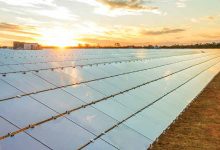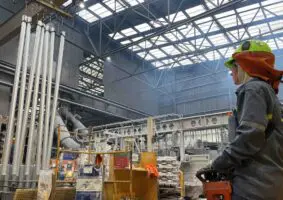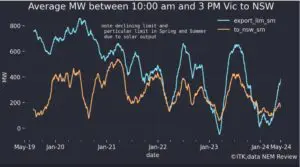ASX listed New Energy Solar is set to sell-off its small portfolio of Australian large-scale solar projects, following a strategic review of the companies investments found better value could be achieved by focusing only on US-based projects.
New Energy Solar announced on Monday that it plans to sell the 111MW Beryl and 55.9MW Manildra solar farms, as the company seeks to address the low market price which it says undervalues its securities.
New Energy Solar instigated a review of the company’s investment strategy in September because the company’s securities consistently traded at a significant discount to what New Energy Solar believes is the fair market valuation of its large-scale solar investments.
New Energy Solar’s securities have consistently traded below 80 cents, despite the company’s most recent assessment of the ‘net asset value’ of its portfolio at $1.29 per security. The company believes the discount is at least in part attributable to a lower level of interest from Australian institutional investors for publicly-listed pure-play renewable energy funds.
New Energy Solar CEO John Martin told RenewEconomy that the company would focus on improving the value of its existing US-based solar portfolio, where there was also a much larger pipeline of new solar projects that would meet the company’s investment needs, allowing the company to achieve much greater scale than what is available in Australia.
Martin said New Energy Solar was established to offer Australian investors a large and diversified portfolio of solar projects, particularly following a significant increase in interest from superannuation funds in responsible investments.
Br he said many Australian institutional investors have preferred simplified ‘pure-play’ investments, and that New Energy Solar’s mix of Australian and US projects had actually created a barrier to attracting institutional investors.
New Energy Solar listed on the ASX as one of Australia’s only pure-play solar companies, following a ‘yield-co’ model that delivers steady dividends to securityholders. While this model is relatively common in overseas markets, it is relatively novel in Australia and this has likely been a contributing factor to its apparent undervaluation in Australia.
New Energy Solar’s review – conducted by Ashurst and BRC Capital – found a number of factors were affecting the market price, including the composition of the security register and the low levels of trading liquidity; the market capitalisation and the modest following by market analysts, and the inability of small-cap listed renewable companies to gain traction on the ASX.
It also cited the location of the assets in two very distinct markets. New Energy Solar’s management has said it has consistently found better value in US-based large-scale solar projects, with a competitive and often difficult Australian market squeezing the returns achievable from local solar projects.
CEO John Martin told RenewEconomy that a strong investment pipeline is likely to continue in the United States, even under a re-elected Trump administration, and would likely be even larger if Democrat challenger Joe Biden was to be successful in November.
While both the Beryl and Manildra solar farms have avoided much of the disruption that has plagued many of Australia’s recent large-scale solar projects, including grid connection delays and unfavourable loss factor determinations, the company was recently forced to write down the book value of its portfolio due to falls in wholesale electricity prices.
US-based projects have represented the bulk of New Energy Solar’s portfolio, which consists of 606MW of capacity spread across 14 projects. The portfolio has generally been locked into long-term offtake projects, providing a consistent source of revenue for projects.
The company said that it would start looking for potential buyers before the end of the year, with an aim to complete the sale process by mid-2021, and has already received interest from potential buyers. The proceeds of the sale would be either delivered to securityholders through buybacks or a special dividend, or used to pay down some of the company’s debt.
New Energy Solar is yet another in a flurry of solar project developers and investors announcing an exit from the Australian market, as policy uncertainty and network difficulties position Australia as a much more difficult market to work within, compared to overseas markets.
FRV has reportedly put its seven solar farms up for sale, UK investor John Laing has sold its wind portfolio and will sell its remaining solar assets when connection and grid issues are resolved, while construction giant Downer EDI, developers Ellaktor and its subsidiary Biosar, as well as contractors Decmil have all announced exits from the Australian market in 2020.
New Energy Solar’s announcement will further diminish the number of listed assets with exposure to the Australian market, given the takeovers of wind energy companies Infigen Energy and Windlab, which will ultimately see both delisted from the ASX.










